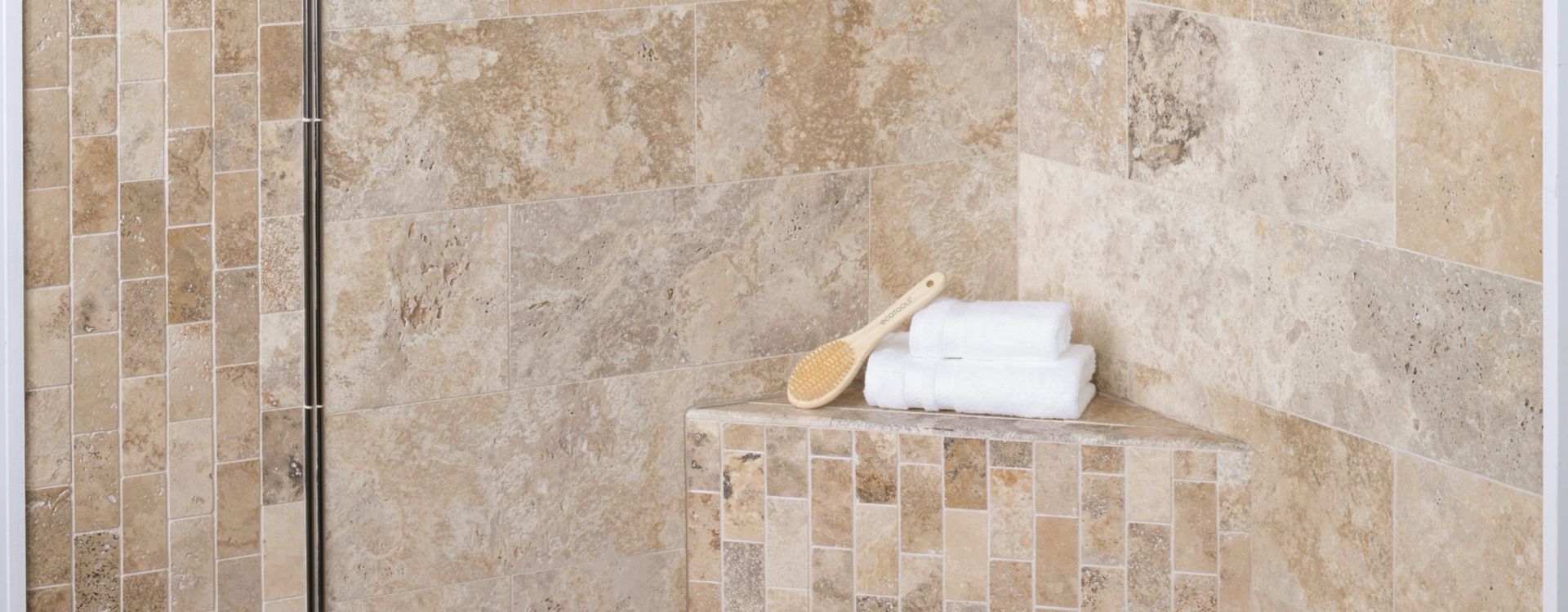How to Clean Travertine Tile

Cleaning travertine tiles requires care to preserve their natural beauty and prevent damage. In this article, we will explain how to clean travertine tile floors and travertine tile showers as well as some general guidance on caring for these natural stone tiles.
What You'll Need
- Dish soap or commercial stone tile cleaning product
- Bucket
- Soft mop or microfiber cloth
- Soft towels or squeegee
How to Clean Travertine Floors
Step 01 of 04: Sweep or Vacuum
Use a soft-bristled broom or vacuum cleaner to remove loose dirt and debris, which could scratch the surface of the travertine if they are spread around with a mop. If you are using a vacuum, either use one without a beater bar or use a soft bristle hose attachment.
Step 02 of 04: Mix the Cleaning Solution
Fill your bucket with warm water and mix a small amount of dish soap or the appropriate amount of commercial stone tile cleaner as directed by the manufacturer. Never use harsh chemicals or acid-based cleaners, as these can seriously damage travertine tiles..
Step 03 of 04: Mop the Floor
Dunk your mop into the bucket to get it wet and then thoroughly wring it out so it is slightly damp. Leaving excess moisture on travertine tiles even for a short period can put the tiles at risk of water damage, especially if they are not properly sealed.
Fill a second bucket with clean water and rinse the mop regularly to ensure you are not spreading dirt from one area of the floor to another. Once all the mopping is complete, go over the floor a second time with clean water to remove any cleaning solution residue that may be left over.
Step 04 of 04: Dry the Floor
Go over the floor with a soft towel or a microfiber cloth to pick up any remaining water. Doing this quickly will help prevent water spots that can make it so your floor still looks dirty.
Travertine Tile Care Tips
Cleaning Schedule
For both floors and shower walls, a weekly cleaning is recommended to keep tiles looking pristine and to prevent the buildup of dirt or soap scum. If either area is used heavily or starts to look dirty before a week has passed since the last cleaning, consider cleaning it every two to three days. Spills or other more urgent cleaning needs should be tended to as quickly as possible to prevent staining.
How to Make Travertine Tiles Last Longer
There are a few simple steps you can take to help your travertine tiles last longer. The first and most important step to take is to ensure your travertine tiles are properly sealed. Whether they are installed on your living room floor or in your shower, sealing travertine tiles will protect them against moisture, scratching and other potential natural stone hazards.
To make your travertine floor tiles last longer, place doormats at entrances to trap dirt and debris before it gets tracked onto the floor tiles. When these little bits of abrasive material accumulate, they can begin to scratch the tile surface. Area rugs in high-traffic areas can also help protect the travertine from scratches and wear.
How to Clean Grout Lines
If your grout lines need a more thorough cleaning than the travertine tile surrounding them, it's important to take extra care to clean them without damaging the delicate stone surface. The simplest way to do this is by giving extra attention to the grout lines during your routine cleaning process. Spend a little extra time going over the grout lines with the mop or sponge.
For grout lines that need more deeper cleaning, you can apply a mixture of equal parts water and baking soda. Allow this mixture to sit for a few minutes and then scrub it with a small, soft bristle brush such as a grout brush or a toothbrush.